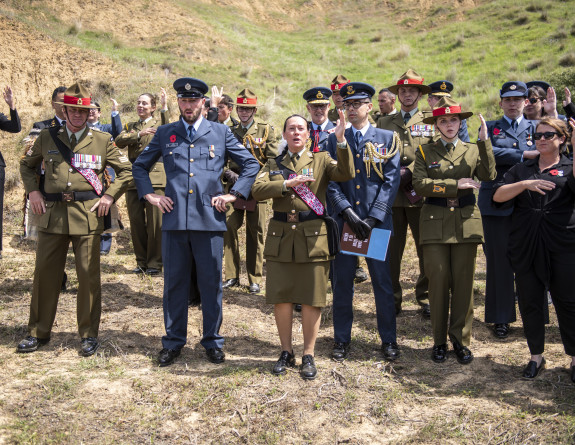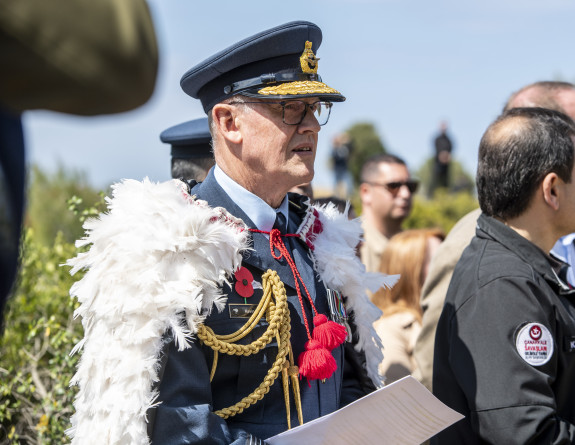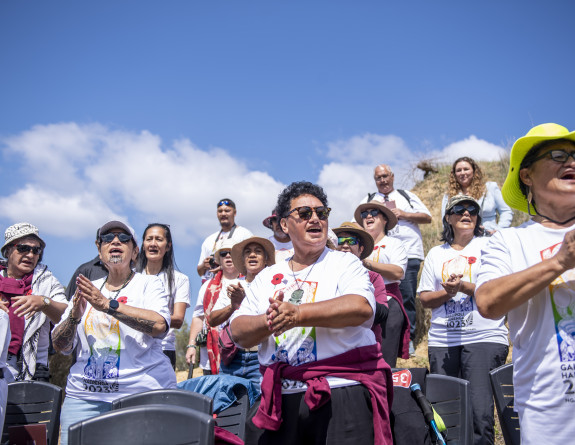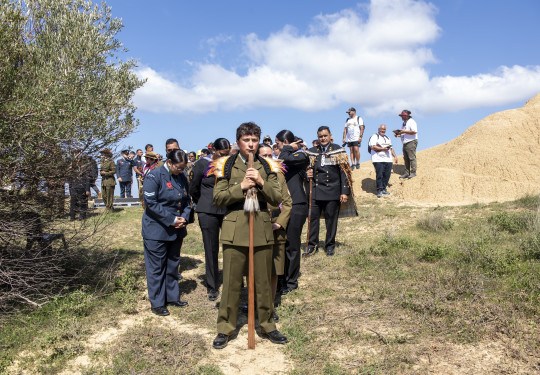Moving ceremony commemorates Maori Pah site at Gallipoli
Emotions ran high during a solemn rededication and remembrance ceremony held on the Gallipoli Peninsula at the place where NZ Maori Contingent made its camp before the assault on the heights of Chunuk Bair during World War I.
24 April, 2023
More than 100 people gathered yesterday [Sunday, 23 April] at the site where the 477-strong Māori Contingent of the New Zealand Expeditionary Force arrived at Gallipoli, Türkiye, in July 1915.
New Zealand Minister of Defence Andrew Little joined official representatives from New Zealand, Türkiye and Australia, as well as the New Zealand Defence Force (NZDF) Gallipoli contingent, descendants of 28 (Maori Battalion) and other representatives at the historic site.
Last year during the Anzac Day commemorations, the New Zealand Minister for Veterans, Meka Whaitiri, asked Ismail Kaşdemir, the President of the Gallipoli Historic Parks Directorate, whether it would be possible to officially mark the site.
Since then, the NZDF and other agencies have worked closely with Turkish authorities in creating an information sign and improving access to the site, which is 300 metres off the main road.



During the service, a replica King’s Colour of the Pioneer (Maori) Battalion was paraded and the Chief of Defence Force, Air Marshal Kevin Short, addressed those who had gathered for the emotional service.
“This place has great historical significance for Māori, and to everyone from every country with connections to this place,” he said.
“We are grateful to the Gallipoli Historic Parks Directorate for making the installation of the information sign that marks the site possible.”
The hymn Au e Ihu was sung during the ceremony, as it was in the same area on the evening of 6 August 1915, shortly before the soldiers went into action as they gathered for karakia (prayers), himene (hymns) and to farewell each other.
Soldiers from the time during the harrowing offensive recalled: “…they moved off, the platoons all cheered each other, crying ‘Ka mate, ka mate, ka ora’… We all felt and thought of our great-grandfathers’ times when they prepared to go into battle’. The chaplain’s last words to the men were: Kia māia! Kia toa! [Be brave! Be bold!]”.
The NZDF contingent is in Türkiye to support Anzac Day commemorations at the Anzac commemorative site and New Zealand memorial service at Chunuk Bair.
Historical background:
- The 477-strong Māori Contingent of the New Zealand Expeditionary Force arrived at Gallipoli on 3 July 1915. Its service at Gallipoli was the first occasion a Māori unit took part in combat outside New Zealand. By the time of the evacuation only 60 men remained; the remainder dead or evacuated as battle casualties or because of sickness.
- The contingent was based below No 1 Outpost, which was at that time occupied by the 10 Australian Light Horse. The contingent’s campsite became known as the “New Zealand Maori Pah” (a fortified village).
- The entrance to the trench connecting the pah with the Big Sap trench was marked by traditional figures carved on its wall. There are famous photos of these carvings but they were likely destroyed by earthworks post-WWI.
- This location was chosen because it gave some protection from the shells and bullets which rained down from the heights. Yet even as they dug in on that first day, the Contingent began to suffer the daily casualties from snipers and shrapnel that were part of the life at Gallipoli.
- One of the men of the Wellington Mounted Rifles, who were about to join part of the Māori Contingent for the attack on Table Top that night, wrote:
- The hymn ‘Jesus Lover of My Soul’ [Au e Ihu] was sung in Māori, to a tune of their own. The parts blended beautifully. The chaplain in a splendid voice sang the solo, the rest supplying the obligate... My squadron stood around silent listening intently. There was something about… the tune and the scene that brought tears to the eyes, and yet as we listened we felt that they and we could go through anything with that beautiful influence behind us.
- The Contingent distinguished itself during the attempt to capture Chunuk Bair. Together with the regiments of the New Zealand Mounted Rifles they were part of the stunning successes at Old No 3 Outpost, Table Top, Bauchop’s Hill and Little Table Top, which paved the way for the infantry’s attack, albeit unsuccessful, on Chunuk Bair.
- On 21 August, men from the Maori Contingent joined the New Zealand Mounted Rifles, Australian, Gurkha and British troops in the attack on Hill 60 (Kaiajik Aghala).
- In the last six weeks of the campaign, elements of the Maori Contingent served with the New Zealand infantry battalions.
- The 10th Australian Light Horse (ALH) were described as “agreeable” neighbours and some of the Maori Contingent were involved in a funeral service for one of the Australians killed by a sniper. The 10th ALH departed from the vicinity of No 1 Outpost on 31 July and would suffer grievous casualties a week later in the charge at the Nek.
Note: The traditional spelling of ‘Maori pah’ has been adopted with regards to this site which includes no macron on the word ‘Maori’ and an ‘h’ included on word ‘pah’. This has been done in consultation with leading Māori academics and reflects the spelling used at the time.
